AMAZON multi-meters discounts AMAZON oscilloscope discounts
Power distribution systems are a very important part of electrical power systems. In order to transfer electrical power from an alternating current (AC) or a direct current (DC) source to the place where it will be used, some type of distribution network must be utilized. The method used to distribute power from where it is produced to where it is used can be quite simple. For example, a battery can be connected directly to a motor, with only a set of wires.
More complex power distribution systems are used, however, to transfer electrical power from the power plant to industries, homes, and commercial buildings. Distribution systems usually employ such equipment as transformers, circuit breakers, and protective devices.
TERMINOLOGY
This section (Section 8) deals with electrical power distribution fundamentals.
After studying this Section, you should have an understanding of the following terms:
- Power Transmission System
- Underground Distribution System
- High-Voltage Direct Current (HVDC) Distribution System
- Cryogenic Cable
- Parallel Operation
- Radial Distribution System
- Ring Distribution System
- Network Distribution System
- Transformer
- Primary Winding
- Secondary Winding
- Transformer Core
- Closed-Core Transformer Construction
- Shell-Core Transformer Construction
- Efficiency
- Power Losses
- Step-Up Transformer
- Step-Down Transformer
- Transformer Voltage Ratio
- Transformer Current Ratio
- Multiple Secondary Transformer
- Autotransformer
- Transformer Polarity
- Transformer Volt-Ampere Rating
- Transformer Malfunction
- Conductor
- Circular Mil (cmil)
- American Wire Gauge (AWC)
- Resistivity
- Ampacity
- Insulation
OVERVIEW OF ELECTRICAL POWER DISTRIBUTION
The distribution of electrical power in the United States is normally in the form of three-phase, 60-Hz alternating current. This power, of course, can be manipulated or changed in many ways by the use of electrical circuitry.
For instance, a rectification system is capable of converting the 60-Hz AC into a form of DC, as was discussed in Section 7. Also, single-phase power is generally suitable for lighting and small appliances, such as those used in the home or residential environment. However, where a large amount of electrical power is required, three-phase power is more economical.
The distribution of electrical power involves a very complex system of interconnected power transmission lines. These transmission lines originate at the electrical power-generating stations located throughout the United States. The ultimate purpose of these power transmission and distribution systems is to supply the electrical power necessary for industrial, residential, and commercial use. From the point of view of the systems, we may say that the overall electrical power system delivers power from the source to the load that is connected to it. A typical electrical power distribution system is shown in FIG. 1.
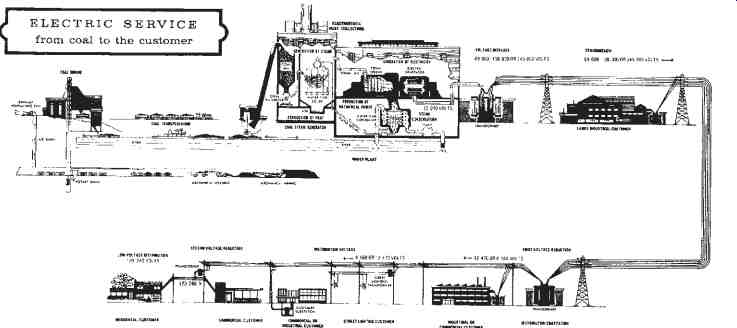
FIG. 1. A typical electrical power distribution system (Kentucky Utilities
Company)
Industries use almost 50 percent of all the electrical power produced, so three-phase power is distributed directly to most industries. Electrical substations use massive transformers and associated equipment, such as oil-filled circuit breakers, high-voltage conductors, and huge strings of insulators, in distributing power to industry. From these substations, power is distributed to the industrial sites to energize the industrial machinery, to residential homes, and to commercial users of electrical power.
POWER TRANSMISSION AND DISTRIBUTION
Power transmission and distribution systems are used to interconnect electrical power production systems and to provide a means of delivering electrical power from the generating station to its point of utilization.
Most electrical power systems east of the Rocky Mountains are interconnected with one another in a parallel circuit arrangement. These interconnections of power production systems are monitored and controlled, in most cases, by a computerized control center. Such control centers provide a means of data collection and recording, system monitoring, frequency control, and signaling. Computers have become an important means of assuring the efficient operation of electrical power systems.
The transmission of electrical power requires many long, interconnected power lines, to carry the electrical current from where it is produced to where it is used. However, overhead power transmission lines require much planning to ensure the best use of our land. The location of overhead transmission lines is limited by zoning laws and by populated areas, highways, railroads, and waterways, as well as other topographical and environmental factors. Today, an increased importance is being placed upon environmental and aesthetic factors. Power transmission lines ordinarily operate at voltage levels from 12 kV to 500 kV of AC. Common transmission line voltages are in the range of 50 to 150 kV of AC. High voltage direct current overhead transmission lines may become economical, although they are not being used extensively at the present time.
Another option is ultra high-voltage transmission lines, which use higher AC transmission voltages. Also, underground transmission methods for urban and suburban areas must be considered, since the right-of way for overhead transmission lines is limited. AC overhead transmission voltages have increased to levels in the range of 765 kV, with research now dealing with voltages of over 1000 kV. One advantage of overhead cables is their ability to dissipate heat. The use of cryogenic cable may bring about a solution to heat dissipation problems in conductors.
Underground Distribution
The use of underground cable is ordinarily confined to the short lengths required in congested urban areas. The cost of underground cable is much more than that of aerial cable. To improve underground cable power-handling capability, research is being done in forced-cooling techniques, such as circulating-oil and compressed-gas insulation. Another possible method is the use of cryogenic cables or superconductors, which operate at extremely low temperatures and have a large power-handling capability.
High-voltage Direct Current Transmission
An alternative to transmitting AC voltages for long distances is high-voltage direct current (HVDC) power transmission. HVDC is suit able for long-distance overhead power lines, or for underground power lines. DC power lines are capable of delivering more power per conductor than equivalent AC power lines. Because of its fewer power losses, HVDC is even more desirable for underground distribution. The primary disadvantage of HVDC is the cost of the necessary AC-to-DC conversion equipment. There are, however, some HVDC systems in operation in the United States. At present, HVDC systems have been designed for transmit ting voltages in the range of 600 kV. The key to the future development of HVDC systems may be the production of solid state power conversion systems with higher voltage and current rating. With a continued developmental effort, HVDC should eventually playa more significant role in future electrical power transmission systems.
Cryogenic Cable
There are some problems involved in installing an overhead electrical power distribution system, particularly in urban areas. One of these problems is obtaining a right-of-way for the overhead cable through heavily populated areas. The difficulty is caused primarily by the unattractive appearance of the lines and the potential danger of the high voltage. The problems associated with overhead transmission lines have led to the development of cryogenic cable for underground power distribution. Cryogenic cables are not considered to be superconductive, but they do have greater electrical conductivity at very low temperatures. These cables, which are still in the developmental stage, will use a metallic conductor cooled to the temperature of liquid nitrogen. One advantage of cryogenic cable over conventional cable is that its greater conductive characteristics will give it a lower line loss (I × R loss).
One design of a cryogenic cable is shown in FIG. 2. This design involves the use of three separate cables, each having a hollow center for cooling purposes. The conductive portion of the cables is stranded aluminum. The aluminum conductors are wrapped with an insulating material that contains liquid nitrogen. Cryogenic cable has considerable potential in any future development of electrical power systems.
Parallel Operation of Power Systems
Electrical power distribution systems are operated in a parallel circuit arrangement. When more power sources (generators) in parallel are added, a greater load demand or current requirement can be met. On a smaller scale, this is like connecting two or more batteries in parallel to provide greater current capacity. Two parallel-connected three-phase alternators are depicted in FIG. 3. Most power plants have more than one alternator lines, or "bus" lines, are usually large, copper bar conductors that can carry very high amounts of current. At low-load demand times, only one alternator would be connected to the bus lines.

FIG. 2. Construction of a cryogenic cable
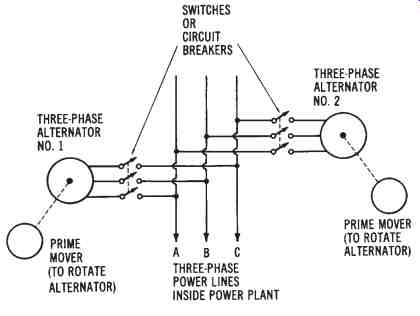
FIG. 3. Parallel connection of two three-phase alternators
FIG. 4 expands the concept of parallel-connected systems. An illustration of two power plants joined together through a distribution sub station is shown. The two power plants might be located 100 miles apart, connected to any single set of power lines inside the plant. These power yet they are connected in parallel to supply power to a specified region.
If, for some reason (such as repairs on one alternator), the output of one power plant is reduced, the other power plant is still available to sup ply power to the requesting localities. It is also possible for power plant number one to supply part of the load requirement ordinarily supplied by power plant number two, or vice versa. These regional distribution systems of parallel-connected power sources provide automatic compensation for any increased load demand in any area.

FIG. 4. Joining two power plants in parallel as part of a regional power
system
The major problem of parallel-connected distribution systems occurs when excessive load demands are encountered by several power systems in a single region. If all of the power plants in one area are operating near their peak power-output capacity, there is no back-up capability. The equipment-protection system for each power plant, and also for each alternator in the power plant, is designed to disconnect it from the system when its maximum power limits are reached. When the power demand on one part of the distribution system becomes excessive, the protective equipment will disconnect that part of the system. This places an even greater load on the remaining parts of the system. The excessive load now could cause other parts of the system to disconnect. This cycle could continue until the entire system is inoperative. This is what occurs when blackouts of power systems take place. No electrical power can be supplied to any part of the system until most of the power plants are put back in operation. The process of putting the output of a power plant back on-line, when the system is down during power outages, can be a long and difficult procedure.
RADIAL, RING, AND NETWORK DISTRIBUTION SYSTEMS
There are three general classifications of electrical power distribution systems. These are the radial, ring, and network systems shown in FIGs 5 through 7. Radial systems are the simplest type, since the power comes from one power source. A generating system supplies power from the substation through radial lines that are extended to the various areas of a community ( FIG. 5). Radial systems are the least reliable in terms of continuous service, since there is no back-up distribution system connected to the single power source. If any power line opens, one or more loads are interrupted. There is more likelihood of power outages. However, the radial system is the least expensive. This system is used in remote areas where other distribution systems are not economically feasible.
Ring distribution systems ( FIG. 6) are used in heavily populated areas. The distribution lines encircle the service area. Power is delivered from one or more power sources into substations near the service area.
The power is then distributed from the substations through the radial power lines. When a power line is opened, no interruption to other loads occurs. The ring system provides a more continuous service than the radial system. Additional power lines and a greater circuit complexity make the ring system more expensive.
Network distribution systems ( FIG. 7) are a combination of the radial and ring systems. They usually result when one of the other systems is expanded. Most of the distribution systems in the United States are net work systems. This system is more complex, but it provides very reliable service to consumers. With a network system, each load is fed by two or more circuits.

FIG. 5. A radial power distribution system
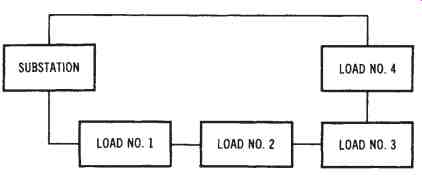
FIG. 6. A ring power distribution system
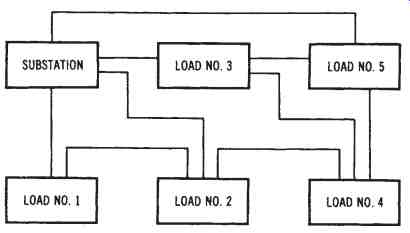
FIG. 7. A network power distribution system
USE OF TRANSFORMERS FOR POWER DISTRIBUTION
The heart of a power distribution system is an electrical device known as a transformer. This device is capable of controlling massive amounts of power for efficient distribution. Transformers are also used for many other applications. A knowledge of transformer operation is essential for under standing power distribution systems. The distribution of AC power is de pendent upon the use of transformers at many points along the line of the power distribution system.
It is economically feasible to transmit electrical power over long distances at high voltages since less current is required at high voltages, and therefore line loss (I2R) is reduced significantly. A typical high-volt age transmission line may extend a distance of 50 to 100 miles from the generating station to the first substation. These high-voltage power transmission lines typically operate at 100,000 to 500,000 volts by using step-up transformers to increase the voltage produced by the AC generators at the power station. Various substations are encountered along the power distribution system, where transformers are used to reduce the high transmission voltages to a voltage level such as 480 volts, which is suitable for industrial motor loads, or to 120/240 volts for residential use.
Transformers provide a means of converting an AC voltage from one value to another. The basic construction of a transformer is illustrated in FIG. 8. Notice that the transformer shown consists of two sets of windings that are not physically connected. The only connection between the primary and secondary windings is the magnetic coupling effect known as mutual induction, which takes place when the circuit is energized by an AC voltage. The laminated iron core plays an important role in transfer ring magnetic flux from the primary winding to the secondary winding.
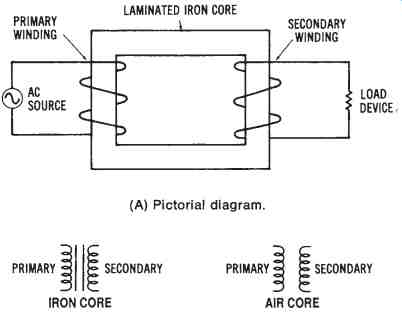
FIG. 8. Basic transformer construction: (A) Pictorial design, (B) Schematic
diagram
Transformer Operation
If an AC current, which is constantly changing in value, flows in the primary winding, the magnetic field produced around the primary winding will be transferred to the secondary winding. Thus, an induced voltage is developed across the secondary winding. In this way, electrical energy can be transferred from the source (primary-winding circuit) to a load (secondary-winding circuit).
The efficient transfer of energy from the primary to the secondary windings of a transformer depends on the coupling of the magnetic field between these two windings. Ideally, all magnetic lines of force developed around the primary winding would be transferred by magnetic coupling to the secondary winding. However, a certain amount of magnetic loss takes place as some lines of force escape to the surrounding air.
Transformer Core Construction
In order to decrease the amount of magnetic loss, transformer windings are wound around iron cores. Iron cores concentrate the magnetic lines of force, so that better coupling between the primary and secondary windings is accomplished. Two types of transformer cores are illustrated in FIG. 9. These cores are made of laminated iron to reduce undesirable eddy currents, which are induced into the core material. These eddy currents cause power losses. The diagram of FIG. 9A shows a closed core transformer construction. The transformer windings of the closed-core type are placed along the outside of the metal core. FIG. 9B shows the shell-core type of construction. The shell-core construction method produces better magnetic coupling, since the transformer windings are surrounded by metal on both sides. Note that the primary and secondary windings of both types are placed adjacent to one another for better magnetic coupling.
Transformer Efficiency and Losses
Transformers are very efficient electrical devices. A typical efficiency rating for a transformer is around 98 percent. Efficiency of electrical equipment is expressed as:
Pout
Efficiency (%) = --- × 100
Pin where:
Pout
…is the power output in watts, and…
Pin is the power input in watts.

FIG. 9. Types of iron-core transformers: (A) Closed-core type, (B) Shellcore
type.
Sample Problem:
Given: a transformer circuit has a power output of 2.5 kW and a power input of 2,550 W.
Find: the efficiency of the transformer.
Solution:
2,500 W
% Eff = ---- × 100
2,550 W
% Eff = 98%
The losses that reduce efficiency, in addition to flux leakage, are cop per and iron losses. Copper loss is the I2R loss of the windings, while iron losses are those caused by the metallic core material. The insulated laminations of the iron core help to reduce iron losses.
Step-Up and Step-Down Transformers
Transformers are functionally classified as step-up or step-down types.
These types are illustrated in FIG. 10. The step-up transformer in FIG. 10 has fewer turns of wire on the primary than on the secondary. If the primary winding has 50 turns of wire and the secondary has 500 turns, a turns ratio of 1:10 is developed. Therefore, if 12-volts AC is applied to the primary from the source, 10 times that voltage, or 120 volts ac, will be transferred to the secondary load (assuming no losses).
The example in FIG. 10B is a step-down transformer. The step down transformer has more turns of wire on the primary than on the secondary. The primary winding of the example has 200 turns, while the secondary winding has 100 turns-or a 2:1 ratio. If 120-volts AC are applied to the primary from the source, then one-half that amount, or 60-volts AC, will be transferred to the secondary load.
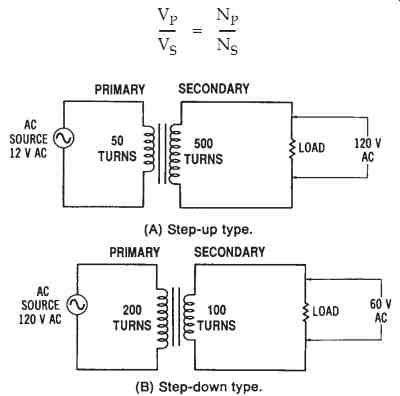
FIG. 10. Step-up and step-down transformers
Transformer Voltage and Current Relationships
In the preceding examples, a direct relationship is shown between the primary and secondary turns and the voltages across each winding.
This relationship may be expressed as:
VP NP
- = - VS NS
where:
VP = the voltage across the primary winding,
VS = the voltage across the secondary winding,
NP = the number of turns in the primary winding, and
NS = the number of turns in the secondary winding.
Sample Problem:
Given: a transformer circuit has the following values:
VP = 240 volts
NP = 1000 turns
VS = 120 volts
Find: the number of secondary turns of wire required to accomplish this step-down of voltage.
Solution:
VP NP
- = - VS NS
240 V 1000
-- = -- 120 V NS
NS = 500 turns
The transformer is a power-control device; therefore, the following relationship can be expressed:
PP = PS + losses where:
PP = the primary power, and
PS = the secondary power.
Sample Problem:
Given: the power output (secondary power) of a transformer is 15 kW, and its losses are as follows:
iron loss -200 W
copper loss -350 W
Find: the power input (primary power) required. Solution:
PP = PS + losses
= 15,000 W + (200 W + 350 W)
PP = 15,550 watts
The losses are those that ordinarily occur in a transformer. In transformer theory, an ideal device is usually assumed, and losses are not considered. Thus, since PP = PS, and P = V × I, then VP × IP = VS × IS where:
IP = the primary current, and
IS = the secondary current.
Therefore, if the voltage across the secondary is stepped up to twice the voltage across the primary, then the secondary current will be stepped down to one-half the primary current. The current relationship of a transformer is thus expressed as:
IP NS
- = - IS NP
Note that whereas the voltage-turns ratio is a direct relationship, the current ratio is an inverse relationship.
Sample Problem:
Given: an ideal transformer circuit has the following values:
VP =600V
VS =2400V
IS =80A
Find: the primary current drawn by the step-up transformer
Solution:
IP NS
- = - IS NP
IP 2400 V
-- = -- 80 A 600 V IP = 3,200 A
Multiple Secondary Transformers
It is also possible to construct a transformer that has multiple secondary windings, as shown in FIG. 11. This transformer is connected to a 120-volt AC source, which produces the primary magnetic flux. The secondary has two step-down windings and one step-up winding. Between points 1 and 2, a voltage of 5-volts AC could be supplied. Between point 5 and point 6, 30-volts AC may be obtained, and between points 3 and 4, a voltage of 360-volts AC can be supplied to a load. This type of transformer is used for the power supply of various types of electronic equipment and instruments.
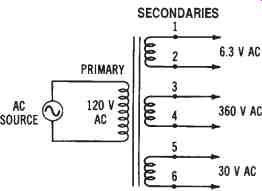
FIG. 11. Transformer with multiple secondary windings Autotransformers
Another specialized type of transformer is the autotransformer, shown in FIG. 12. The autotransformer has only one winding, with a common connection between the primary and secondary. The principle of operation of the autotransformer is similar to that of other transformers. Both the step-up and step-down types are shown in FIG. 12. Another type of control device is a variable autotransformer, in which the winding tap may be adjusted along the entire length of the winding to provide a variable AC voltage to a load.
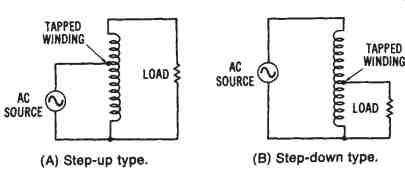
FIG. 12. Autotransformers: (A) Step-up type, (B) Step-down type
Current Transformers
Current transformers are often used to reduce a large value of line current to a smaller value, for measurement or control purposes. These transformers are used to measure the current magnitude of high-current systems. Since most metering systems respond linearly to current changes, the current transformer principle can also be used to measure quantities other than current in high-power systems.
Transformer Polarity and Ratings
Power distribution transformers usually have polarity markings, so that their windings may be connected in parallel to increase their current capacity. The standard markings are H1, H2, H3, et cetera, for the high voltage windings, and X1, X2, X3, et cetera, for the low-voltage windings.
Many power transformers have two similar primary windings and two similar secondary windings to make them adaptable to different volt age requirements simply by changing from a series to a parallel connection. The voltage combinations available from this type of transformer are shown in FIG. 13.
The ratings of power transformers are very important. Usually, transformers are rated in kilovolt-amperes (kVA). A kilowatt rating is not used, since it would be misleading, because of the various power-factor ratings of industrial loads. Other power transformer ratings usually include frequency, rated voltage of each winding, and an impedance rating.
Power transformers located along a power distribution system operate at very high temperatures. Cooling equipment is necessary for large power transformers. The purpose of the cooling equipment is to conduct heat away from the transformer windings. Several power transformers are of the liquid-immersed type. The windings and core of the transformer are immersed in an insulating liquid, which is contained in the transformer enclosure. The liquid insulates the windings, and conducts heat away from them as well. One insulating liquid that is used extensively is called Askarel. Some transformers, called dry types, use forced air or inert gas as coolants. Some locations, particularly indoors, are considered hazardous for the use of liquid-immersed transformers. However, most transformers, rated at over 500 kVA, are liquid filled.
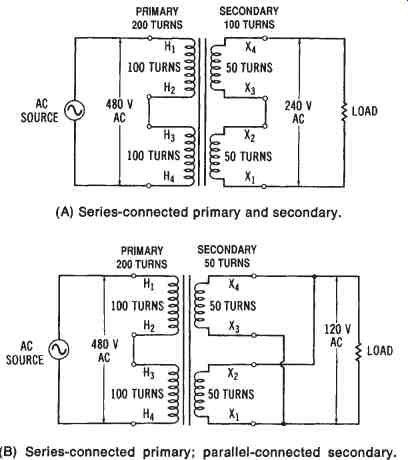

FIG. 13. Some transformer connection methods for various voltage combinations:
(A) Series-connected primary and secondary, (B) Series-connected primary,
parallel-connected secondary, (C) Parallel, connected primary, series-connected
secondary, (D) Parallel-connected primary and secondary
Transformer Malfunctions
Transformer malfunctions result when a circuit problem causes the insulation to break down. Insulation breakdown permits electrical arcs to flow from one winding to an adjacent winding. These arcs, which may be developed throughout the transformer, cause a decomposition of the paper or oil insulation used in the transformer. This can be a particularly hazardous problem for larger power transformers, since the reaction of the electric arc and the insulating material may produce a gas. For this reason, it is very important for circuit protection to be provided for transformers.
They should have power removed promptly whenever some type of fault develops. Current-limiting fuses may also be used to respond rapidly to any circuit malfunction.
CONDUCTORS IN POWER DISTRIBUTION SYSTEMS
The portions of the electrical distribution system that carry current are known as conductors. Conductors may be in the form of solid or stranded wires, cable assemblies, or large metallic bus-bar systems. A conductor may have insulation, or, in some cases, it may be bare metal.
Conductor Characteristics
Round conductors are measured by using an American wire gage (AWG) (see FIG. 14). The sizes range from No. 36 (smallest) to No. 0000 (largest), with 40 sizes within this range. The cross-sectional area of a conductor doubles with each increase of three sizes and the diameter doubles with every six sizes. The area of conductors is measured in circular mils (cmil).
Almost all conductors are made of either copper or aluminum. Both of these metals possess the necessary flexibility, current-carrying ability, and economical cost to act as efficient and practical conductors. Copper is a better conductor; however, aluminum is 30 percent lighter in weight.
Therefore, aluminum conductors are used when weight is a factor in conductor selection. One specialized overhead power line conductor is the aluminum-conductor, steel-reinforced (ACSR) type used for long-distance power transmission. This type of conductor has stranded aluminum wires.
Conductor Types
Copper is still the most widely used conductor material, both for solid and for stranded electrical wire. The availability of a variety of thermoset ting and thermoplastic insulating materials offers great flexibility in meeting the requirements for most conductor applications. The operating temperature ranges for various types of insulation are given in TABLE 1.
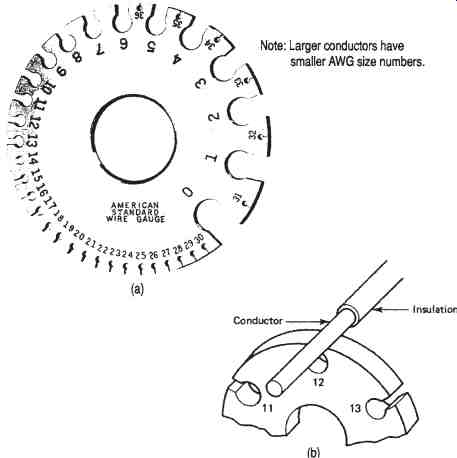
FIG. 14. Using the AWG: (A) The American wire gage (AWG) (B) Using the
AWG to measure conductor size
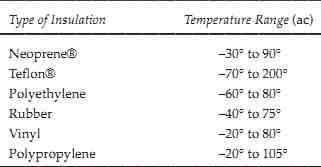
TABLE 1. Operating Temperature
Ranges of Various Types of Insulation
Type of Insulation Temperature Range (ac)
Neoprene -30° to 90°
Teflon -70° to 200°
Polyethylene -60° to 80°
Rubber -40° to 75°
Vinyl -20° to 80°
Polypropylene -20° to 105°
Copper has a combination of various properties, such as malleability, strength, and high electrical and thermal conductivity. It is also capable of being alloyed or coated with other metals. Copper may be plated with silver to produce a conductor with better solderability and, also, a conductor that has better high-frequency characteristics. This is due to the high conductivity of the silver and the "skin effect" present at higher frequencies.
Where little vibration and no flexing are required of a wire or cable, single-strand conductors may be used. The advantage of a single-strand conductor is its lower cost compared to that of equivalent types of stranded wire. Wire and cable with solid conductors may be used as interconnection wires for electrical instruments and similar equipment. Stranded conductors are used to provide more flexibility. They also have a longer usage life than do solid conductors. If a solid conductor were cut by wire strippers during its installation, it would probably break after being bent a few times. However, stranded wire would not break in this situation.
Wires having from 26 to 41 strands may be used where much flexibility is needed, while wires with from 65 to 105 strands may be used for special purposes.
Flat or round braided conductors are occasionally used for certain applications where they are better suited than solid or stranded cables. These conductors are seldom insulated, since this would hinder their flexibility.
CONDUCTOR AREA
The unit of measurement for conductors is the circular mil (cmil), since most conductors are round. One mil is equal to 0.001 inch (0.0254 mm); thus, one cmil is equal to a circle whose diameter is 0.001 inch. The cross-sectional area of a conductor (in cmils) is equal to its diameter (D), in mils squared, or cmil = D2. For example, if a conductor is 1/4 inch (6.35 mm) in diameter, its circular mil area can be found as follows. The decimal equivalent of 1/4 inch is 0.250 inch, which equals 250 mils. Inserting this value into the formula for the cross-sectional area of a conductor gives you:
Area = D2 (in mils)
= (250)2
= 62,500 cmils
If the conductor is not round, its area may still be found by applying the following formula:
Area (in square mils)
Area (in emils) = ---------- 0.7854
This formula allows us to convert the dimensions of a conductor to square mils, and then to an equivalent value in cmils. For example, if a conductor is 1/2 inch × 3/4 inch (12.7 mm × 19.05 mm), the cmil area may be found using the following method. Again, convert the fractional inches into decimal values, and then into equivalent mil values. Thus, 1/2 inch equals 0.5 inch, which equals 500 mils, and 3/4 inch is 0.75 inch, which equals 750 mils. Using the formula for square mils and substituting, you have:
Area (in square mils)
Area = --------- 0.7854
500 mils × 750 mils
= --------- 0.7854
375,000 mils^2
= ------ 0.7854
= 477,463.7 cmils
We can also use the cmil area of a conductor, which may be found in any standard conductor table, to find the diameter of a conductor. If a table shows that the cmil area of a conductor is equal to 16,510 cmils (a No. 8 AWG conductor), its diameter is found by the following method. Since
D2 = cmil then:
D = cmil
= 16,510 cmils
= 128.5 mils
= 0.1285 inch
RESISTANCE OF CONDUCTORS
The resistance of a conductor expresses the amount of opposition it will offer to the flow of electrical current. The unit of measurement for resistance is the ohm (O). The resistivity (p) of a conductor is the resistance for a specified cross-sectional area and length. This measurement is given in circular mil-feet (cmil-ft). The resistivity of a conductor changes with the tempera ture, so resistivity is usually specified at a temperature of 20° Celsius. The resistivity for some common types of conductors is listed in TABLE 2.
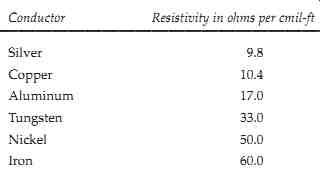
TABLE 2. Resistivity of Common Conductors
Conductor Resistivity in ohms per cmil-ft.
Silver 9.8
Copper 10.4
Aluminum 17.0
Tungsten 33.0
Nickel 50.0
Iron 60.0
We can use TABLE 2 to calculate the resistance of any size conductor.
We know that resistance increases as the length increases and decreases as the cross-sectional area increases. The following method can be used to find the resistance of 500 feet (152.4 meters) of aluminum conductor that is V. inch (6.35 mm) in diameter. According to TABLE 2, aluminum has a resistivity of 17 ohms. The diameter (D) equals 1/4 inch, which equals 0.250 inch, which is the equivalent of 250 mils. Using the formula and substituting, we have:
Resistivity × Length (in feet)
Resistance = --------------- Diameter 2 (in mils)
17 × 500
= ---- (250)2
8,500
= ---- 62,500
= 0.136 ohms
CONDUCTOR SIZES AND TYPES
TABLE 3 lists the sizes of copper and aluminum electrical conductors.
The American wire gage (AWG) is the standard used to measure the diameter of conductors. The sizes range from No. 40 A WG, which is the smallest, to No. 0000 A We. Sizes larger than No. 0000 AWG are expressed in thousand circular mil (MCM) units.
Note, in TABLE 3, that as the A WG size number becomes smaller, the conductor becomes larger. Sizes up to No.8 A WG are solid conductors, while larger wires have from 7 to 61 strands. TABLE 3 also lists the DC resistance (in ohms per 1000 feet) of the copper and aluminum conductors. These values are used to determine conductor voltage drop in power distribution systems.
AMPACITY OF CONDUCTORS
A measure of the ability of a conductor to carry electrical current is called ampacity. All metal materials will conduct electrical current to some extent; however, copper and aluminum are the two most desirable types used. Copper is used more often than aluminum, since it is the better conductor of the two and is physically stronger. However, aluminum is usually used where weight is a factor, such as for long-distance overhead power lines. The weight of copper is almost three times that of a similar volume of aluminum; however, the resistance of aluminum is over 150 percent that of copper. The ampacity of an aluminum conductor is, therefore, less than that of a similar size copper conductor. A wiring design will ordinarily use aluminum conductors that are one size larger than the copper conductors necessary to carry a specific amount of current, to allow for this difference.
The ampacity of conductors depends upon several factors, such as the type of material, the cross-sectional area, and the type of area in which the conductors are installed. Conductors in the open, or in "free air," dissipate heat much more rapidly than those that are enclosed in a metal raceway, or plastic cable. When several conductors are contained within the same enclosure, heat dissipation is a greater problem.
TABLE 3. Sizes of Copper and Aluminum Conductors
The National Electric Code (NEC)
The National Electrical Code (NEC) is a very important document to understand. All industrial equipment and wiring must conform to the NEC standards. The NEC is not difficult to use. The user should become familiar with the comprehensive index contained in the NEC, and with the organization of the various sections. For instance, if you wish to re view the standards related to "system grounding," you should look in the index and locate this term. The index will refer you to the sections in the NEC that discuss "system grounding." A table of contents for an NEC is shown below. This listing provides an overview of the organization of the NEC. It is important for electrical technicians to learn to use the NEC.
AMPACITY TABLES
Tables 4 through 6 are used for conductor ampacity calculations for electrical wiring design. These tables are simplified versions of those given in the NEC. TABLE 4 is used to determine conductor ampacity when a single conductor is mounted in free air. TABLE 5 is used to find the ampacity of conductors when not more than three are mounted in a raceway or cable. These two tables are based on ambient temperatures of 30° Celsius (86° Fahrenheit). TABLE 6 lists the correction factors that are used for temperatures over 30°C. As an example, we will find the ampacity of three No. 10 copper conductors with RHW insulation that are mounted in a race-way. They will be located in a foundry area where temperatures reach 50°C. The ampacity for No. 10 RHW copper wire is 30 A (from TABLE 5). The correction factor for an RHW-insulated conductor at 50°C ambient temperature is 0.75 ( TABLE 6). Therefore,
30 amperes × 0.75 = 22.5 amperes
TABLE 4. Allowable Ampacities of Single Conductance in Free Air
TABLE 5. Ampacities of Conductors in a Raceway of Cable (3 or less)
TABLE 6. Correction Factors for Temperatures about 300°C
USE OF INSULATION IN POWER DISTRIBUTION SYSTEMS
Synthetic insulation for wire and cable is classified into two broad categories-thermosetting and thermoplastic. The mixtures of materials within each of these categories are so varied as to make the available number of insulations almost unlimited. Most insulation is composed of compounds made of synthetic rubber polymers (thermosetting) and from synthetic materials (thermoplastics). These synthetic materials are combined to pro vide specific physical and electrical properties.
Thermosetting materials are characterized by their ability to be stretched, compressed, or deformed within reasonable limits under mechanical strain, and then to return to their original shape when the stress is removed.
Thermoplastic insulation materials are best known for their excellent electrical characteristics and relatively low cost. These materials are popular, since they allow much thinner insulation thicknesses to be used to obtain good electrical properties, particularly at the higher voltages.
There are many types of insulation used today for electrical conductors. Some new materials have been developed that will last for exception ally long periods of time and will withstand very high operating temperatures. The operating conditions where the conductors are used mainly determine the type of insulation required. For instance, system voltage, heat, and moisture affect the type of insulation required. Insulation must be used that will withstand both the heat of the surrounding atmosphere and the heat developed by the current flowing through the conductor.
Exceptionally large currents will cause excessive heat to be developed in a conductor. Such heat could cause insulation to melt or burn. This is why overcurrent protection is required as a safety factor to prevent fires. The ampacity or current-carrying capacity of a conductor depends upon the type of insulation used. The NEC has developed a system of abbreviations for identifying various types of insulation. Some of the abbreviations are shown in TABLE 7.
TABLE 7. Common Abbreviations for Types of Electrical Insulation